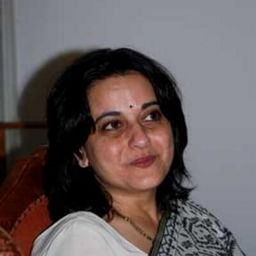
Articles
-
1 week ago |
htsyndication.com | Namita Bhandare
India, April 14 -- For 23 years, Khabar Lahariya has been reporting the news from Bundelkhand, a hilly region between northern Madhya Pradesh and southern Uttar Pradesh. Led entirely by women, most of them Dalit, Muslim or Adivasi, this hyperlocal news outlet also proudly serves up its news through a naariwadi chasma (feminist lens). Across mediums from its website to YouTube and Instagram, Khabar Lahariya is transforming social attitudes to gender and caste.
-
1 week ago |
hindustantimes.com | Namita Bhandare
For 23 years, Khabar Lahariya has been reporting the news from Bundelkhand, a hilly region between northern Madhya Pradesh and southern Uttar Pradesh. Led entirely by women, most of them Dalit, Muslim or Adivasi, this hyperlocal news outlet also proudly serves up its news through a naariwadi chasma (feminist lens). Across mediums from its website to YouTube and Instagram, Khabar Lahariya is transforming social attitudes to gender and caste.
-
2 weeks ago |
htsyndication.com | Namita Bhandare
India, April 7 -- On the 50th day of the protest, Padmajam from Trivandrum decided to join the other women in chopping off her hair, except, unlike the hundreds of others who cut off a few inches, she went and shaved it all off. It was an extreme step - one that marked her frustration with the Kerala government. Despite nearly two months of protest, the government has not given in to the demands of her fellow ASHAs (accredited social health activists).
-
2 weeks ago |
hindustantimes.com | Namita Bhandare
On the 50th day of the protest, Padmajam from Trivandrum decided to join the other women in chopping off her hair, except, unlike the hundreds of others who cut off a few inches, she went and shaved it all off. It was an extreme step — one that marked her frustration with the Kerala government. Despite nearly two months of protest, the government has not given in to the demands of her fellow ASHAs (accredited social health activists).
-
2 weeks ago |
hindustantimes.com | Namita Bhandare
“In those days, the dowry act was very weak,” says Manjiri Jaruhar, Bihar’s first woman IPS office, then posted in Bokaro. “We knew women were being killed for dowry but could never establish the link.” Section 498A, a non-bailable, non-compoundable offence that allowed arrests without a warrant, was intended to “give teeth to cases where women had been killed for dowry,” says Jaruhar. In the four decades since, we have failed to eradicate dowry.
Try JournoFinder For Free
Search and contact over 1M+ journalist profiles, browse 100M+ articles, and unlock powerful PR tools.
Start Your 7-Day Free Trial →X (formerly Twitter)
- Followers
- 38K
- Tweets
- 42K
- DMs Open
- No

RT @Article14live: From 283 cases in 2016 to 296 in 2022: @NCRBHQ data show acid attacks continue despite regulation of acid sales. @amirra…

RT @Article14live: “In my 16-year journey, I've seen countless such delays” Acid attack survivor @ShaheenMalik99, who was attacked in 2009…

For generations, India’s favourite summer beverage:

At RoohAfza, quality comes first! From sourcing raw materials to the final product, every bottle undergoes rigorous microbiological, chemical, and physical tests to ensure it retains its natural properties, consistency, and safety. #KnowYourRoohAfza #HamdardRoohAfza https://t.co/vtVx7igucz





